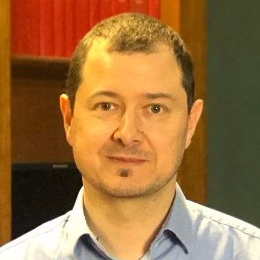Smart Textile Systems for Fault Detection and Diagnosis
A special issue of Sensors (ISSN 1424-8220). This special issue belongs to the section "Fault Diagnosis & Sensors".
Deadline for manuscript submissions: closed (30 October 2022) | Viewed by 2657
Special Issue Editors
Interests: smart textiles; textile and flexible sensors; e-textiles; textiles and flexible actuators; mechanical sensors; reliability of smart textiles; textile monitoring
Special Issues, Collections and Topics in MDPI journals
Interests: smart textiles; e-textiles; electro-conductive coatings; textile electronic components; functional multilayer systems
Special Issues, Collections and Topics in MDPI journals
Special Issue Information
Dear Colleagues,
Smart and interactive textiles are a growing and fascinating research field with enormous potential in the future. The most prominent examples cover a wide spectrum of application areas, such as the medical and healthcare market, as well as structural health monitoring applications in the automotive, building and geotextile sector. Systems for these applications fields include textile structures with sensory functions and clothing systems with integrated electrodes to detect malfunctions of the human body, smart textile alerting systems by changing color, form or sound emission or strain, and pressure sensor systems in textile-reinforced composite structures.
One of the most crucial issues to be solved is the identification of reliable materials and processes to serve application fields. Against this background, the purpose of this Special Issue is to publish high-quality research articles as well as reviews on smart textile systems for fault detection and diagnosis open to any application field.
Potential topics include but are not limited to the following:
- Simulation of smart textile functionalities;
- Smart textile systems for detecting malfunctions and unusual events;
- Robust interconnection systems for smart textiles to improve reliability.
Dr. Cedric Cochrane
Prof. Anne Schwarz-Pfeiffer
Guest Editors
Manuscript Submission Information
Manuscripts should be submitted online at www.mdpi.com by registering and logging in to this website. Once you are registered, click here to go to the submission form. Manuscripts can be submitted until the deadline. All submissions that pass pre-check are peer-reviewed. Accepted papers will be published continuously in the journal (as soon as accepted) and will be listed together on the special issue website. Research articles, review articles as well as short communications are invited. For planned papers, a title and short abstract (about 100 words) can be sent to the Editorial Office for announcement on this website.
Submitted manuscripts should not have been published previously, nor be under consideration for publication elsewhere (except conference proceedings papers). All manuscripts are thoroughly refereed through a single-blind peer-review process. A guide for authors and other relevant information for submission of manuscripts is available on the Instructions for Authors page. Sensors is an international peer-reviewed open access semimonthly journal published by MDPI.
Please visit the Instructions for Authors page before submitting a manuscript. The Article Processing Charge (APC) for publication in this open access journal is 2600 CHF (Swiss Francs). Submitted papers should be well formatted and use good English. Authors may use MDPI's English editing service prior to publication or during author revisions.







